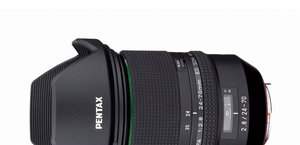Viltrox AF 16 mm f/1.8
3. Build quality
In the following photo the Viltrox AF 16 mm f/1.8 is positioned between the Voigtlander Apo-Lanthar 2/50 and the rival Sony FE 16 mm f/1.8 G. The physical dimensions of the Viltrox and the Sony differ significantly but you have to add that the Sony is exceptionally small for this class of equipment. The dimensions of the Viltrox are exactly what you should expect from a lens with such an angle of view and aperture, providing you also a possibility to attach normal filters. They shouldn't surprise anyone.
 |
Please Support UsIf you enjoy our reviews and articles, and you want us to continue our work please, support our website by donating through PayPal. The funds are going to be used for paying our editorial team, renting servers, and equipping our testing studio; only that way we will be able to continue providing you interesting content for free. |
- - - - - - - - - - - - - - - - - - - - - - - - - - - - - - - - - - - - - - - - - - - - - - - -
 |
Then you find a ribbed aperture ring, also made of metal, as wide as 11 mm. It features aperture markings from f/1.8 to f/22 and an A point, allowing the camera to choose the aperture automatically. The ring moves every 1/3 EV step and it can be declicked. Its performance is good, without any hitches.
 |
Personally I appreciated this feature during the resolution test when, after taking a series of photos of our chart based on the autofocus, I switched the lens to the manual mode. Basing on the distance values I saw on the display I could pace myself with millimeter accuracy and effectively looking for the proper position of the focus. It made my work a lot easier, especially as nowadays focus rings are usually focus-by-wire instruments so they are devoid of any markings. We are never sure about their position. To sum up at first I was sceptical about the idea of a display on the lens but finally I found it really useful.
 |
A manual focus ring is the next part of the lens. It is 26 mm wide, completely covered by fine ribbing. You can't find on it any markings but in this case they are simply not needed – all information will be displayed. The ring performs properly well and is well damped. Running through the whole distance range needs a turn through an angle of 180 degrees, a significant value, allowing you very precise settings.
 |
The front element of the lens doesn't move, is slightly convex, 48 mm in diameter. It is surrounded by a part of the barrel with inscriptions and a non-rotating filter thread, 77 mm in diameter. I admit that I am very pleased by the fact that you can use normal filters with such a fast, ultra wide angle lens.
Among the inscriptions you find information about filter diameter we mentioned earlier, minimum focusing distance (0.27m/0.9ft), and basic parameters of the lens along with different acronyms describing technologies used in the construction. In this case you get STM meaning a stepping motor, APSH and ED describing different types of special lenses, and IF telling about an inner focusing system. I think an inscription 'IMAGE SIZE ϕ43.3mm' is the most interesting one, being perhaps the most complicated way of informing a potential customer that you deal here with a lens designed for full frame cameras. After all the diameter of small format amounts exactly to 43.3 mm.
 |
 |
Buyers get in the box with the lens: both caps, a hood, and a soft pouch which protective properties are a matter of discussion.
 |






